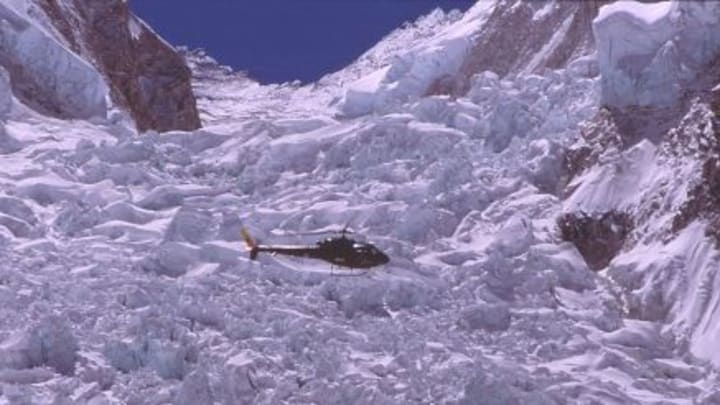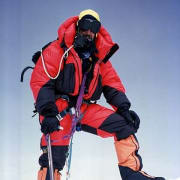Mountain Glaciers are Melting - Including on Mt. Everest

The Khumbu Icefall: A Moving, Frozen River
The Khumbu Icefall is the first stretch of climbing out of basecamp on the south side route of Mt. Everest. The Icefall is a treacherous feature located in the heart of the Khumbu region of Nepal, within the Sagarmatha National Park. This icy labyrinth is an integral part of the southern route to the summit of Mt. Everest, the world's tallest peak at 29,029 ft., and serves as a formidable initial obstacle.
The Khumbu Icefall is a massive glacier that descends from the Western Cwm, a broad, U-shaped valley located above it. The glacier is constantly in motion, making it one of the most dynamic and dangerous sections of the Everest ascent. It's a vast field of ice seracs, crevasses, and towering ice pinnacles that can reach heights over 200 ft. The ever-shifting nature of the icefall makes it particularly perilous, as large blocks of ice can suddenly collapse or shift without warning, creating deadly avalanches.
The Khumbu Icefall is Melting
The Icefall moves at an alarming pace, with some reports suggesting it can shift several feet in just a few hours. This is new. The Icefall is warming and becoming more dangerous. Just a few years ago the ice was frozen and firm all day and night, and the Icefall moved approximately only four feet per day.
The article 'Mount Everest is on Thin Ice’, written by Stacy Meichtry, Krishna Pokharel, and Carl Churchill, with video and photographs by Paolo Bosonin, and published by the Wall Street Journal, explores the effects of global warming on the Khumbu Icefall, and the increasing danger of climbing Mt. Everest.
The Ice Doctors
To navigate the treacherous Khumbu Icefall, climbers use a series of ladders, ropes, and fixed lines that are strategically placed by skilled Sherpas. These Sherpas, known as the ‘Ice Doctors’, spend the entire climbing season assisting climbing teams in navigating the ever-changing terrain. Makeshift bridges are essential for crossing deep crevasses and avoiding the most dangerous sections of the icefall. However, the risk of avalanches and falling ice chunks is ever-present, and climbers must move quickly and efficiently to minimize their time in this hazardous environment. The video of navigating the Khumbu Icefall was created by elite guide company Climbing The Seven Summits.
Death in the Icefall
Seven Nepalese porters died during the first British Mt. Everest Expedition in 1922. Since then, over 300 people have died attempting to climb Mt. Everest, 29,029 ft. Of those deaths, one in seven has occurred in the Khumbu Icefall - earning it a reputation as one of the most dangerous sections of the Everest ascent. Despite the risks, it is a necessary passage for those who wish to reach the summit Everest via the South Col route.
The 2023 climbing season was especially tragic on Mt. Everest, when a record 18 climbers lost their lives on the mountain, including three Ice Doctors. Pemba Tenzing Sherpa, Lhakpa Rita Sherpa, and Da Chhiree Sherpa died on April 12, 2023 while setting the Icefall route when a giant serac collapsed on their newly established route - burying them under the ice. This is both terribly sad, and a chilling representation of the dangers that global warming and an increased climbing population pose when climbing Mt. Everest.
Despite its dangers, the Khumbu Icefall is an awe-inspiring natural wonder. Its towering ice formations and stunning blue hues create a surreal and captivating landscape that leaves a lasting, and often frightening, impression. The Khumbu Icefall serves as a stark reminder of the harsh and unforgiving conditions that climbers must overcome in their quest to reach the top of the world. We simply need to explore ways to preserve its integrity and provide as safe of passage as possible.
